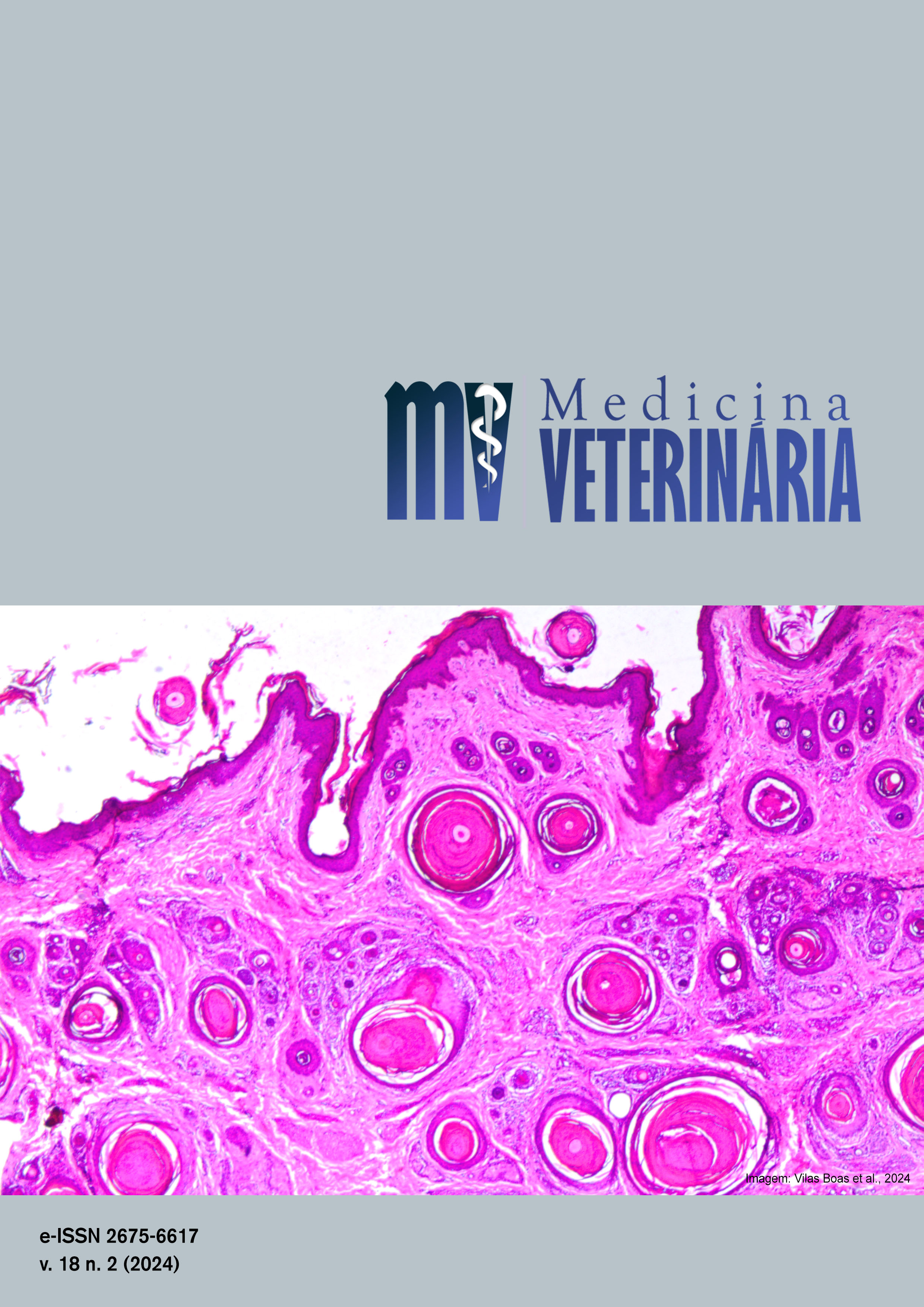Development and implementation of a screening system for dogs and cats in a veterinary hospital
DOI:
https://doi.org/10.26605/medvet-v18n2-6317Keywords:
emergency care, severity, classification system, urgencyAbstract
Triage systems for recognizing and classifying the severity of clinical conditions are not yet available for the veterinary area, so that animals are often treated differently, such as on a first-come, first-served basis or by prior appointment. Faced with the absence of a validated and recognized triage system for recognizing and classifying care for dogs and cats, this research aimed to adapt the Manchester Triage System to a veterinary hospital and evaluate its benefits when it was implemented. About 553 animals and their guardians and/or legal guardians participated in the study, 275 in the first phase and 278 in the second phase. The canine species was predominant in the study (84.8%) and the average age of the animals was 81.33 months. The most selected priority level was green, followed by the category blue, yellow, red and orange in both phases. The superiority of the new sorting system was notorious when compared to the intuitive sorting system. The developed and modified triage system provided a greater number of screened patients, better acceptance by guardians and/or legal guardians, and demonstrated greater clarity regarding the patients' severity status. More studies are needed to evaluate the efficiency and effectiveness of screening systems in the veterinary routine, but their superiority to the intuitive screening system was evident.Downloads
References
Amthauer, C.; Cunha, M.L.C. Manchester triage system: main flowcharts, discriminators and outcomes of a pediatric emergency care. Revista Latino-Americana de Enfermagem, 24: 1-7, 2016.
Azeredo, T.R.M. et al. Efficacy of the Manchester triage system: a systematic review. International Emerging Nursing, 23(2): 47-52, 2015.
Coutinho, A.A.P.; Cecílio, L.C.O.; Mota, J.A.C. Classificação de risco em serviços de emergência: uma discussão da literatura sobre o sistema de triagem de Manchester. Revista Médica de Minas Gerais, 22(2): 188-198, 2012.
Fitzgerald, G. et al. Emergency department triage revisited. Emergency Medicine Journal, 27(1): 86-92, 2009.
Iserson, K.V.; Moskop, J.C. Triage in medicine, part I: concept, history, and types. Annals of Emergency Medicine, 49(3): 275-281, 2007.
Kenedy, K. et al. Triage: techniques and applications in decisionmaking. Annals of Emergency Medicine, 28(2): 136-144, 1996.
King, L.G. et al. Serial estimation of survival prediction indices does not improve outcome prediction in critically ill dogs with naturally occurring disease. Journal of Veterinary Emergency and Critical Care, 11(3): 183, 2001.
Mackway-Jones, K.; Marsden, J.; Windle, J. Emergency Triage: Manchester Triage Group. 3rd ed. Chichester, West Sussex: Wiley-Blackwell, 2013. v.3, 208p.
Martins, J.C.A. et al. Association between vital signs and Manchester triage system: a retrospective observational study. Online Brazilian Journal of Nursing, 16(4): 379-388, 2018.
Mathews, K. et al. Guidelines for recognition, assessment and treatment of pain. Journal of Small Animal Practice, 55: E10-E68, 2014.
R Core Team. R: A language and environment for statistical computing. R Foundation for Statistical Computing, Vienna, Austria, 2019. Available at: <https://www.R-project.org/>. Accessed on: 23 Apr. 2019.
Reid, J. et al. Definitive Glasgow acute pain scale for cats: validation and intervention level. Veterinary Record, 180(18): 449, 2017.
Ruys, L.J. et al. Evaluation of a veterinary triage list modified from a human five-point triage system in 485 dogs and cats. Journal of Veterinary Emergency and Critical Care, 33(3): 303-312, 2012.
Sacoman, T.M. et al. Implantação do sistema de classificação de risco Manchester em uma rede municipal de urgência. Saúde Debate, 43(121): 354-367, 2019.
Souza, C.C. et al. Classificação de risco em pronto-socorro: concordância entre um protocolo institucional brasileiro e Manchester. Revista Latino-Americana de Enfermagem, 19(1): 26-33, 2011.
Downloads
Published
How to Cite
Issue
Section
License
Copyright (c) 2024 Ana Claudia da Fonseca, Larissa Reis Braga, Felipe Gaia de Sousa, Eliane Gonçalves de Melo, Suzane Lilian Beier

This work is licensed under a Creative Commons Attribution-NonCommercial-ShareAlike 4.0 International License.
A Revista de Medicina Veterinária permite que o autor retenha os direitos de publicação sem restrições, utilizando para tal a licença Creative Commons CC BY-NC-SA 4.0.
De acordo com os termos seguintes:
Atribuição — Você deve dar o crédito apropriado, prover um link para a licença e indicar se mudanças foram feitas. Você deve fazê-lo em qualquer circunstância razoável, mas de nenhuma maneira que sugira que o licenciante apoia você ou o seu uso.
NãoComercial — Você não pode usar o material para fins comerciais.
CompartilhaIgual — Se você remixar, transformar, ou criar a partir do material, tem de distribuir as suas contribuições sob a mesma licença que o original.
Sem restrições adicionais — Você não pode aplicar termos jurídicos ou medidas de caráter tecnológico que restrinjam legalmente outros de fazerem algo que a licença permita.







